Table ofContents
The Monster Movies of Universal Studios
The Monster Movies of Universal Studios
James L. Neibaur
ROWMAN & LITTLEFIELD
Lanham Boulder New York London
Published by Rowman & Littlefield
A wholly owned subsidiary of The Rowman &Littlefield Publishing Group, Inc.
4501 Forbes Boulevard, Suite 200, Lanham,Maryland 20706
www.rowman.com
Unit A, Whitacre Mews, 26-34 Stannary Street,London SE11 4AB
Copyright 2017 by Rowman & Littlefield
All images from the authors collection
All rights reserved . No part of this book may be reproduced in any form or by anyelectronic or mechanical means, including information storage and retrievalsystems, without written permission from the publisher, except by a reviewerwho may quote passages in a review.
British Library Cataloguing in PublicationInformation Available
Library of Congress Cataloging-in-PublicationData
Names: Neibaur, James L., 1958 author.
Title: The monster movies of Universal studios /James L. Neibaur.
Description: Lanham : Rowman & Littlefield, [2017]| Includes bibliographical references and index.
Identifiers: LCCN 2016048428 (print) | LCCN2017007474 (ebook) | ISBN 9781442278165 (hardback : alk. paper) | ISBN9781442278172 (electronic)
Subjects: LCSH: Universal City StudiosCatalogs.| Monster filmsCatalogs. | Horror filmsCatalogs.
Classification: LCC PN1999.U57 N45 2017 (print) |LCC PN1999.U57 (ebook) | DDC 016.79143/75/0973dc23
LC record available at https://lccn.loc.gov/2016048428
 The paper used in this publication meets the minimum requirements ofAmerican National Standard for Information SciencesPermanence of Paper forPrinted Library Materials, ANSI/NISO Z39.48-1992.
The paper used in this publication meets the minimum requirements ofAmerican National Standard for Information SciencesPermanence of Paper forPrinted Library Materials, ANSI/NISO Z39.48-1992.
Printed in the United States of America
To a great pal, Kelly Ann Parmelee.
And to her late father, who inspired her love ofmovies.
Thanks, Charlie!
Contents
Acknowledgments
Specialthanks to my son Max Neibaur for collaborating closely on this book. Hes beena fan of these films since childhood, and his assistance on this project meanta great deal to me.
Thanks always to Terri Lynch and Katie Carter,who live every book with me and continue to be invaluable on every project.
Thanks also to Ted Okuda, Kelly Ann Parmelee,Charles Parmelee, Tracy Nelson, Chris Costello, Elena Verdugo, Gregory AllenMank, Tom Weaver, Bill Warren, Scott MacGillivray, and Barb Fellion.
Prologue
Duringthe golden age of Ho llywood inthe 1930s and 1940s, Universal Studios produced many films in several genres,including comedies, musicals, dramas, and westerns. But it is best known forits films of the horror genre, especially those featuring noted monstercharacters. Frankensteins monster, Dracula, the Invisible Man, the Mummy, theWolf Man, and the Creature continue to be iconic figures in popular culture andalso continue to be identified as per their presentation in the Universalhorror movies.
Count Dracula has been played by such actorsas Christopher Lee, Frank Langella, and Gary Oldman, but whenever anyone mimicsthe character, they will invariably do the voice and mannerisms of Bela Lugosi.Lugosi played this character on film only twicein the 1931 Universal classicand the 1948 comedy parody Abbott and Costello MeetFrankenstein . But his performanceand these filmsleft an indelible markand continue to define our perception of the character. The image ofFrankensteins monster is identified as the way Universal makeup artist JackPierce depicted him.
This book examines, discusses, and providesinformation about the monster movies made for Universale Studios during the1930s, 1940s, and 1950s and featuring Frankenstein, Dracula, the Mummy, theInvisible Man, the Wolf Man, and the Creature. Every movie featuring one of thepreviously mentioned monsters, including the initial film and all sequels inthe series, is represented.
Beginning in 1931 with the films Dracula and Frankenstein , chronologicalchapters on the horror movies discuss the studios progression, the importanceof the first films and how they saved Universal from bankruptcy, their eventualrelegation to B movies, and how they finally fizzled out by the end of WorldWar II. A resurgence with Abbott and Costello MeetFrankenstein (1948) resulted in re-releases of the older movies, and amove closer to science fiction in the 1950s with Creaturefrom the Black Lagoon (1954) and its sequels is also included.
However, this is not a book about the horrorfilms as a genre. We do not discuss such Universal films as TheOld Dark House or The Black Cat . These are themonster movies, featuring noted monster characters as central to the narrative.
The monster movies produced by UniversaleStudios have extended beyond the context of their era of release and have livedon over time and generations. The iconic characters and enduring storiescontinue to resonate. Their highs and lows, classics and misfires, impact whenfirst released, and continued significance are all discussed in these pages.
A Very Brief History of Universal Studios
Universale Studios was founded by Carl Laemmle,Mark Dintenfass, Charles O. Baumann, Adam Kessel, Pat Powers, William Swanson,David Horsley, Robert H. Cochrane, and Jules Brulatour in 1912 with Laemmle asthe president. Laemmle would eventually buy out the others, purchase a stringof nickelodeon theaters, and, in 1915, open what was then the largestproduction facility for moving pictures. He bought a 230-acre farm, andUniversal was the first truly big movie studio and remained the largest inHollywood for a decade.
Laemmle was a very careful businessman, andrather than open theater chains like other big studios, he would finance anddistribute his own productions. This was fine for the lower-budget westerns andserials, but Erich Von Stroheims enormous budgets for films like Blind Husbands (1919) and Foolish Wives (1922) almost bankrupted the studio. The silent era is, in fact, the first timethat horror movies saved the studio. Actor Lon Chaney was a master oftheatrical makeup and a brilliant actor. His films, including such notedclassics as The Hunchback of Notre Dame (1923) and The Phantom of the Opera (1925), were extremely lucrativefor the studio and helped it survive the large budgets of the Von Stroheimdramas.
Much of the reason for Universals success wasdue to Laemmles secretary, Irving Thalberg, whose vision as a producer was soeffective in producing better movies more efficiently that he was promoted tostudio chief. However, Louis B. Mayer of MGM lured Thalberg away with thepromise of more money and greater creative control. After Thalberg left,Universal began struggling and was soon a lower-tier studio than the others.They were sustained not by their feature releases but by their popular Oswaldthe Rabbit cartoons that had been originally created by Walt Disney and UbIwerks. A discrepancy with Universal over their salaries resulted in Disney andIwerks going off on their own to create the iconic Mickey Mouse character. Thestudio retained the rights to Oswald the Rabbit, and Walter Lantz was hired tohead an animation department. He continued with the Oswald series until 1943.Lantz would grow with the company as a cartoon producer, eventually offeringsuch favorites as Woody Woodpecker and Andy Panda.
By the end of the 1920s, Laemmles son CarlLaemmle Jr. was head of production. Junior Laemmle was more innovative anddaring than his father, buying theaters and equipping the studio for sound productionduring the early days of talking pictures. Juniors more progressive ideasresulted in the studio producing the first all-color musical feature King of Jazz (1930) and the Best Picture Oscar winner All Quiet on the Western Front (1930).
Buoyed by this success, Junior decided toarrange for some top-level horror movies to be produced by the studio.Recalling the success of the Lon Chaney features, Junior decided to once againuse literary sources as inspirations for some new sound horror films. Recallingthat his father was interested in filming Bram Stokers novel Dracula as early as 1914, Junior set out to make that thestudios first sound horror film. Plans were to produce a lavish productionbased on the novel and to secure the acting talents of Lon Chaney for the titlerole. Chaney was in declining health but continued to be active and agreed toplay Count Dracula. His longtime director Tod Browning was hired to helm theproject. Inspired by the German expressionist horror films of the 1920s, Juniorsecured the services of German cinematographer Karl Freund, who shot suchmovies as The Golem (1920) and Metropolis (1927). Freund was already noted as being among the most innovative cameramenin movies, having invented the dolly shot and consistently exhibited a realunderstanding as to how to help the director command the pace of each film.
Next page


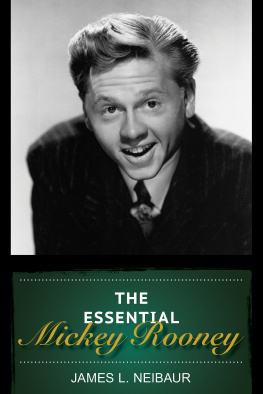

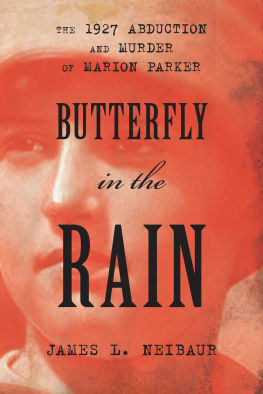
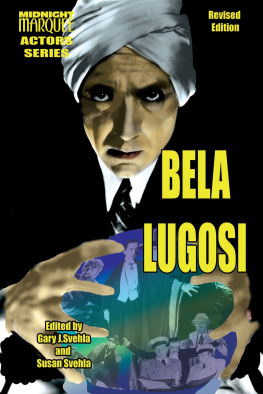
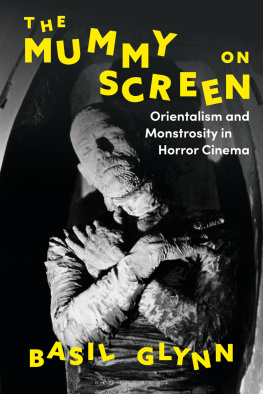
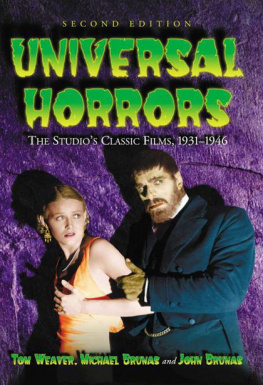

 The paper used in this publication meets the minimum requirements ofAmerican National Standard for Information SciencesPermanence of Paper forPrinted Library Materials, ANSI/NISO Z39.48-1992.
The paper used in this publication meets the minimum requirements ofAmerican National Standard for Information SciencesPermanence of Paper forPrinted Library Materials, ANSI/NISO Z39.48-1992.